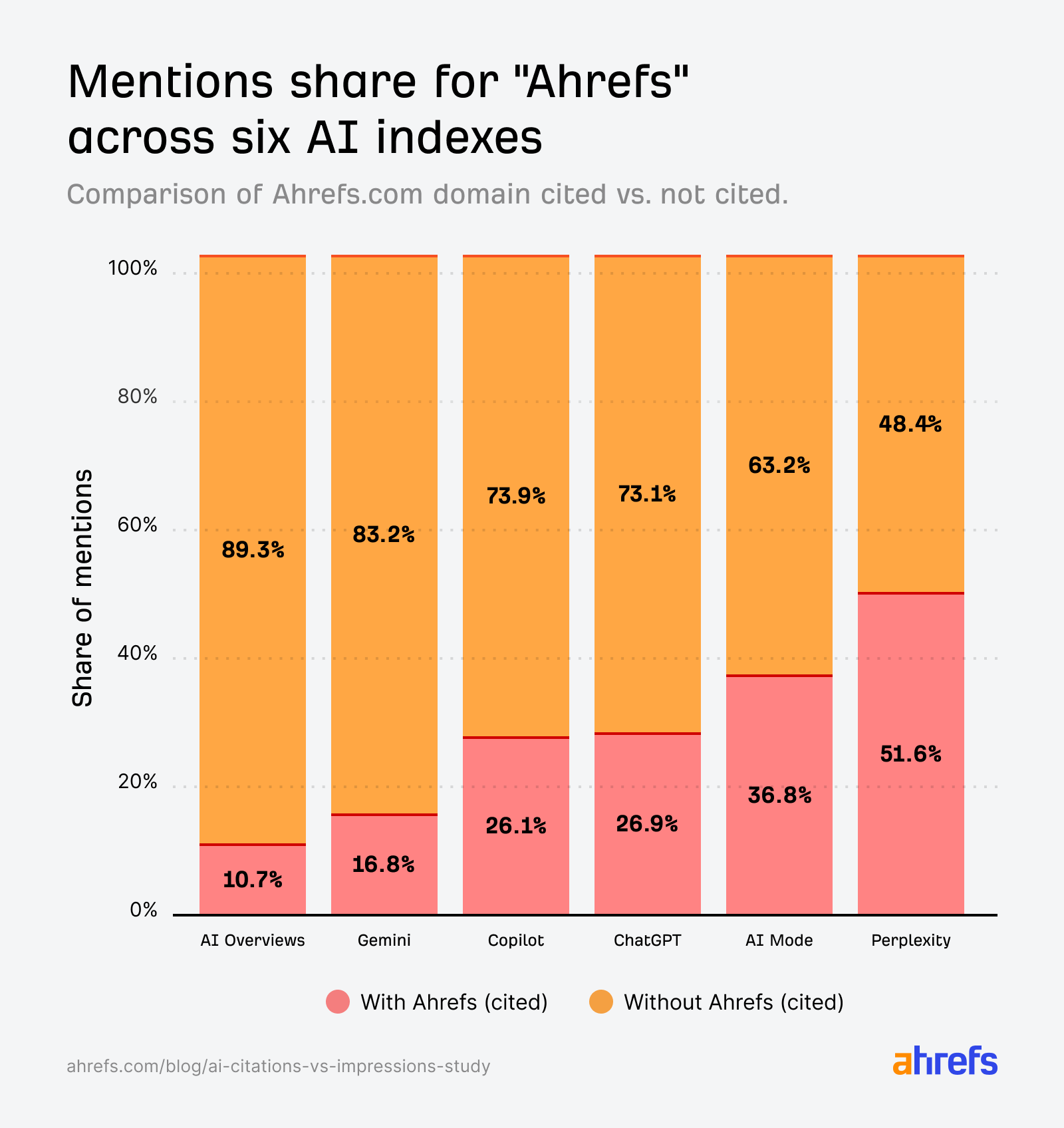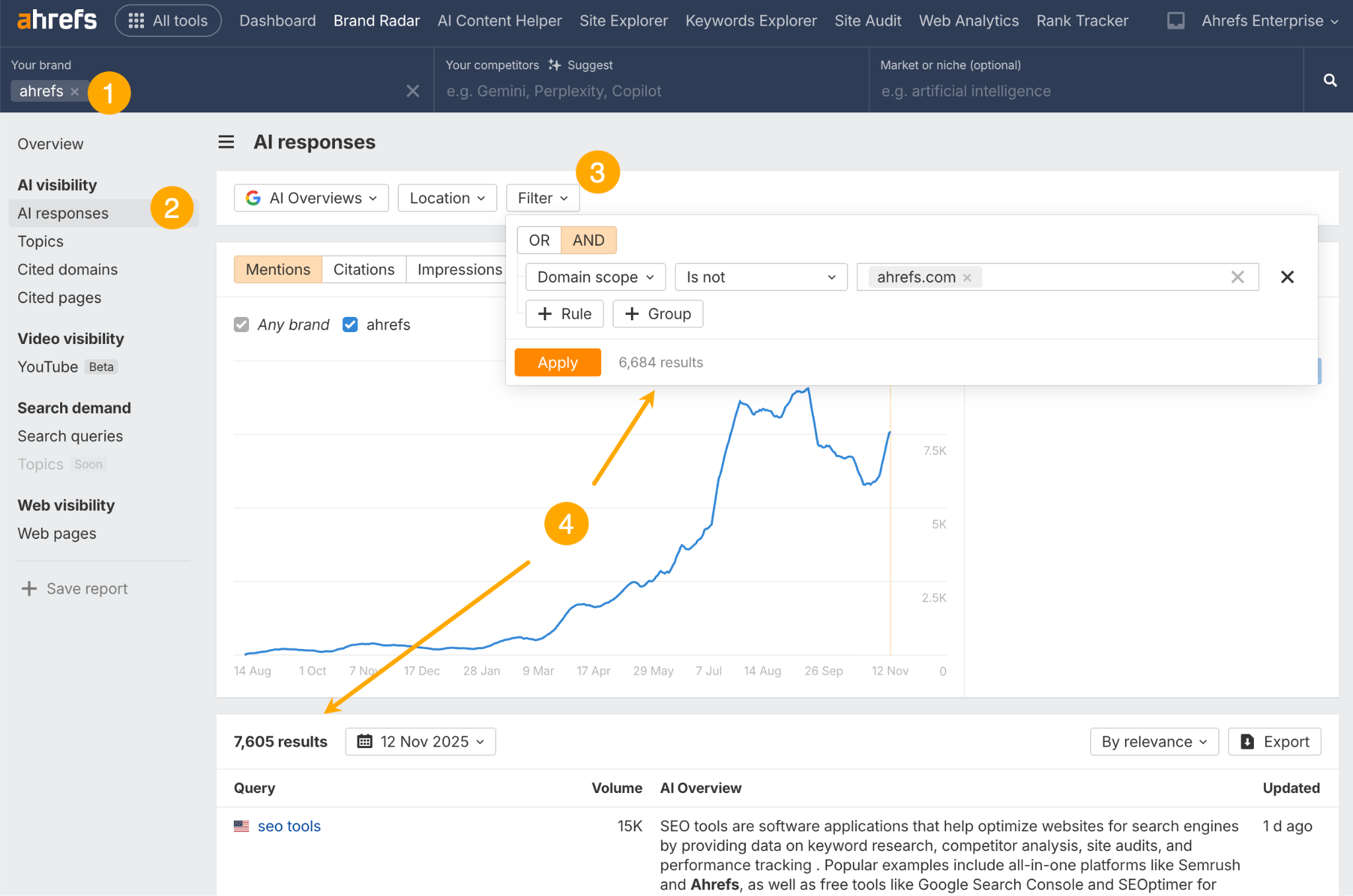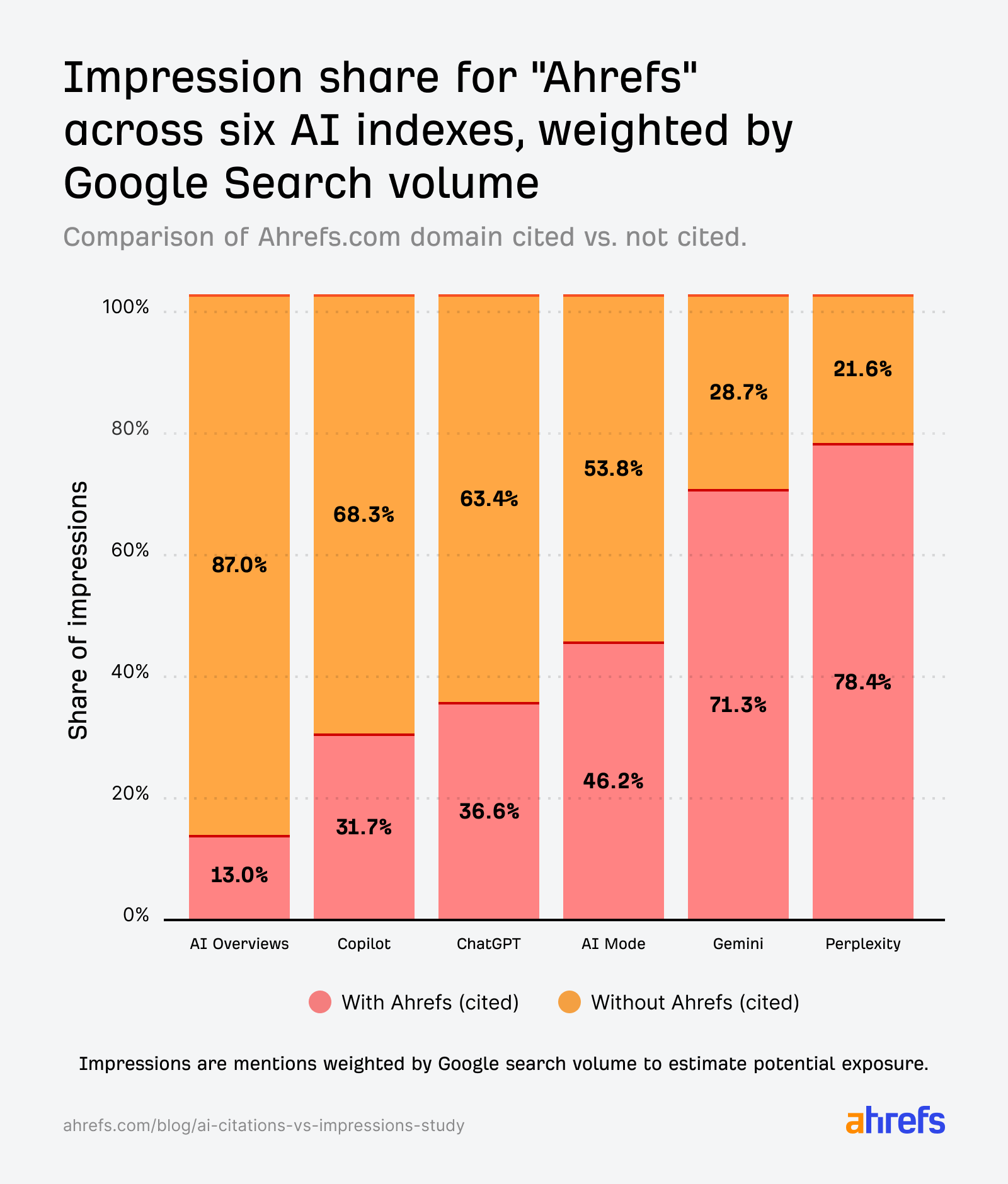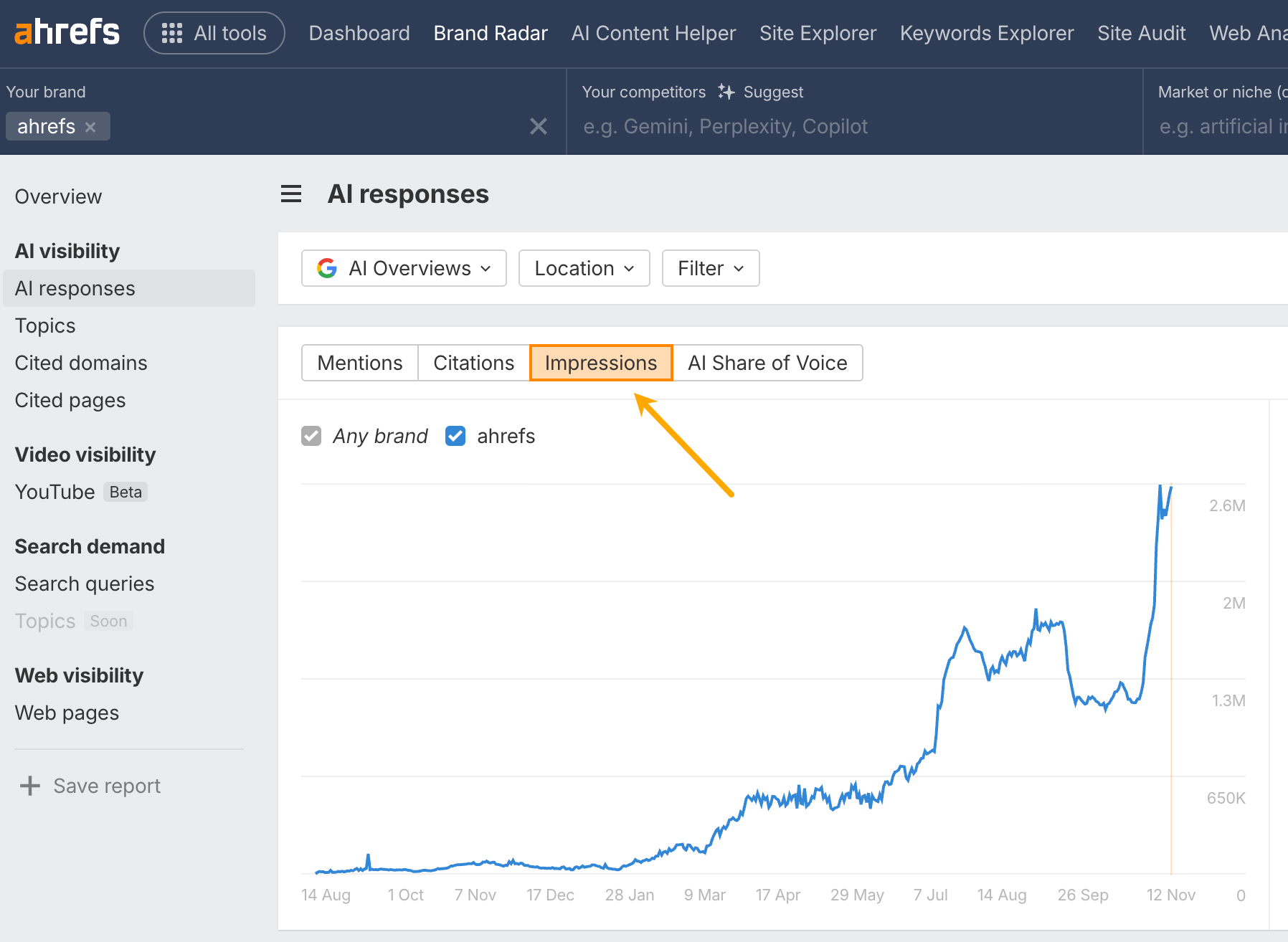But here’s what matters more: in our case, the mentions that do include links appear on high-volume queries. This means your actual visibility—measured in impressions rather than raw citation counts—can be far higher than your link percentage suggests.
In this analysis, I’ll show you how tracking mentions alone paints an incomplete picture, why search volume is your best proxy for AI prompt popularity, and how to measure your own brand’s AI citation rate.
Throughout this article, I’ll use three terms:
- Mentions: When AI says your brand name in a response.
- Citations: When AI includes a link to your website.
- Impressions: Mentions weighted by Google search volume to estimate potential exposure.
The source of the data is Ahrefs Brand Radar.
AI assistants mentioned our brand far more often than they linked to us.
Out of more than 31,000 brand mentions pulled from a database of 150 million prompts using Brand Radar, I found that AI Overviews were the stingiest—they included a link only 10.7% of the time. Perplexity, on the other hand, was the most generous, linking 51.6% of the time. The other platforms fell somewhere in between.
- 10.7% of the time on AI Overviews
- 16.8% on Gemini
- 26.1% on Copilot
- 26.9% on ChatGPT
- 36.8% on AI Mode
- 51.6% on Perplexity

This means on these AI assistants, our brand got mentioned without a link 50-90% of the time; about 28% of the time on average.
Here’s how to check that for your brand with Brand Radar:
- Plug in the name of your brand.
- Go to the AI responses report.
- Set the filters to exclude your domain scope (like in the screenshot below)
- Note down the difference and repeat for each AI index.

I wanted to see how often people actually see brand mentions that link to our site (i.e. their impressions) compared to mentions that don’t. Once I factored in Google search volume, the share of mentions with links jumped much higher.
So even though most AI mentions don’t include a link, the ones that do tend to show up on higher-traffic queries, meaning they’re seen by more people.
Here’s how often linked mentions appeared, weighted by impressions:
- 78.4% of the time on Perplexity
- 71.3% on Gemini
- 46.2% on AI Mode
- 36.6% on ChatGPT
- 31.7% on Copilot
- 13.0% on AI Overviews

In other words, you might get linked only 20% of the time, but because those links appear on high-volume queries, way more than 20% of people actually see your citations.
To check this for your own brand, follow the same steps described above, just switch from the Mentions tab to the Impressions tab.

At Ahrefs, we’ve always focused on going after high-volume keywords in our SEO strategy. Because of that, we can’t say for sure whether AI platforms naturally cite sources more often on popular queries.
What we can say is that our focus on high-traffic topics in our SEO strategy seems to carry over into AI visibility. Our brand tends to get cited on the more popular keywords—the same keywords we’ve been prioritizing in our SEO work.
That’s why mentions with links end up being seen by more people, even though there are more overall mentions without citations.
Every AI platform has its own way of citing sources, and that’s something we can’t fully control. But we can improve AI visibility by using SEO to optimize for keywords popular in traditional Google Search.
Think of search volume as a proxy for prompt popularity. For example, if 10,000 people search “best SEO tools” on Google each month, thousands of others are probably asking AI assistants similar questions, even if they phrase them differently. By focusing on high-volume keywords, you’re really aligning with the most common AI prompts.
And because AI assistants don’t rely on a single exact query, this matters even more. When someone asks a question, the AI often runs several related “fan-out queries” in the background—basically different versions or breakdowns of the original prompt—to gather more context.
You can’t predict those exact variations, but if you cover a topic thoroughly, you’re more likely to be cited across all of them.
Sure, AI might only mention or link to your site 20–30% of the time. But when you’re showing up for high-traffic topics, those small percentages happen across thousands of queries, creating a big visibility boost.
Got questions or comments? Find me on LinkedIn.


